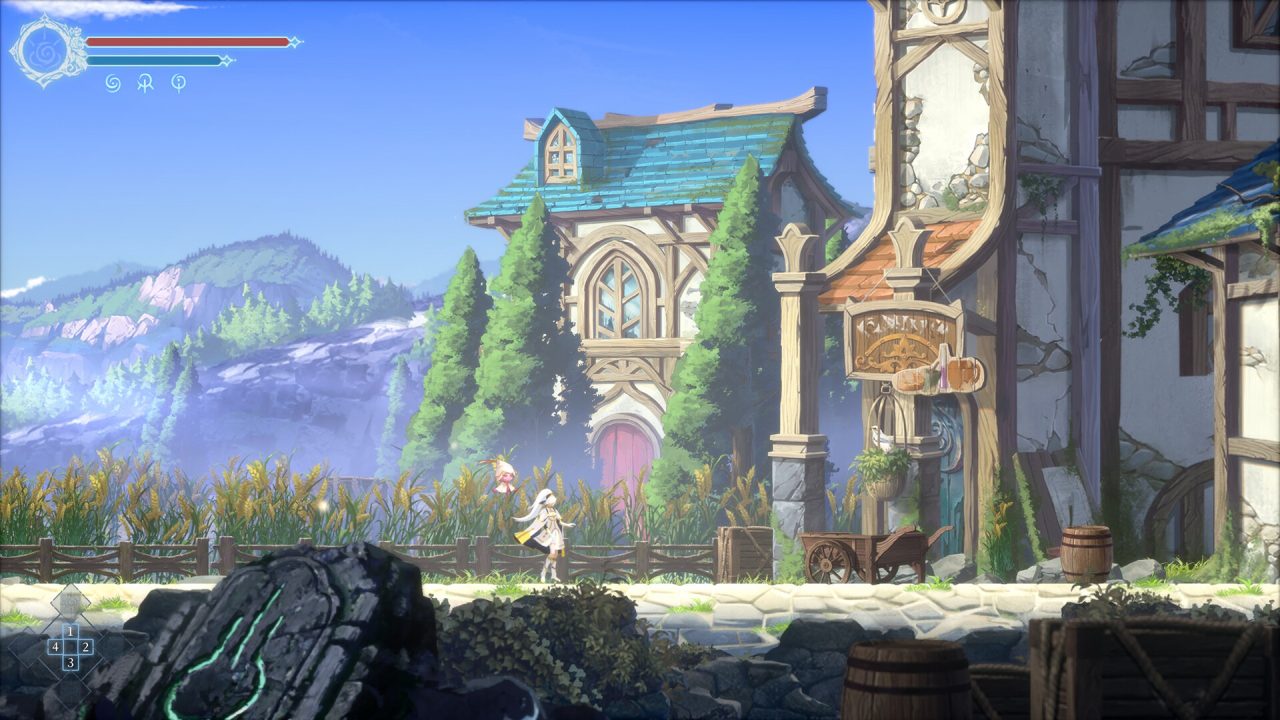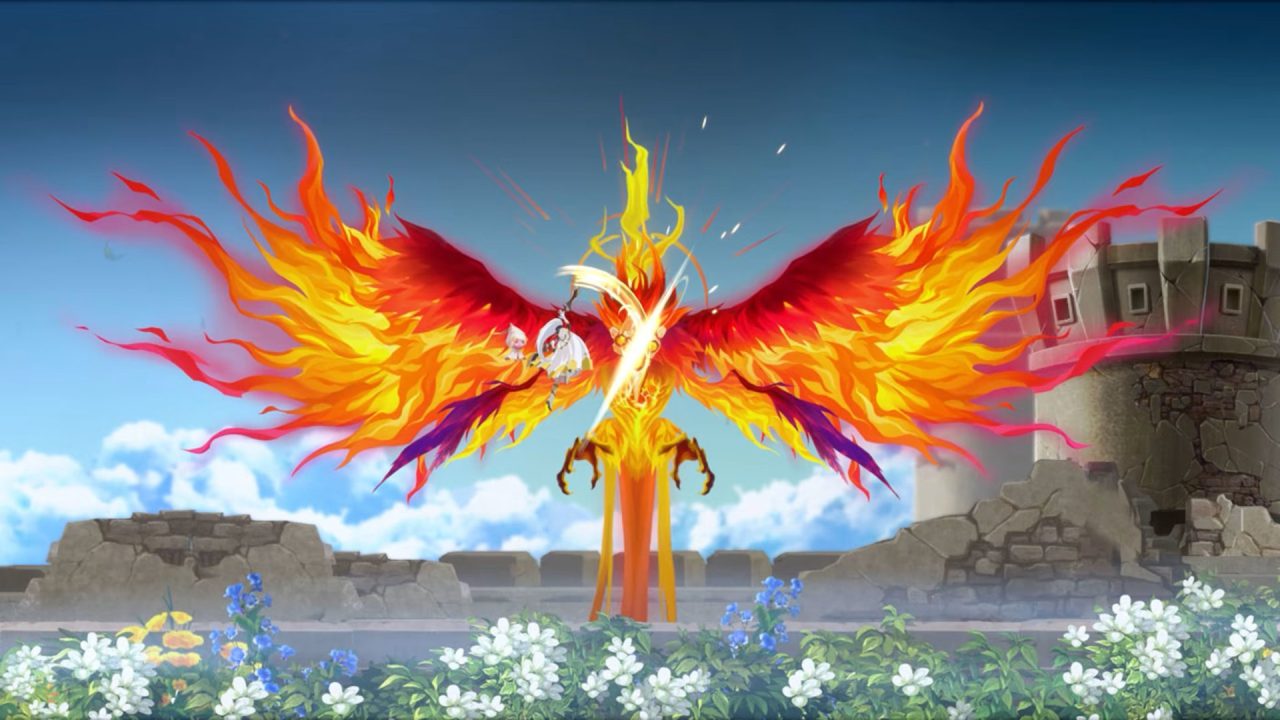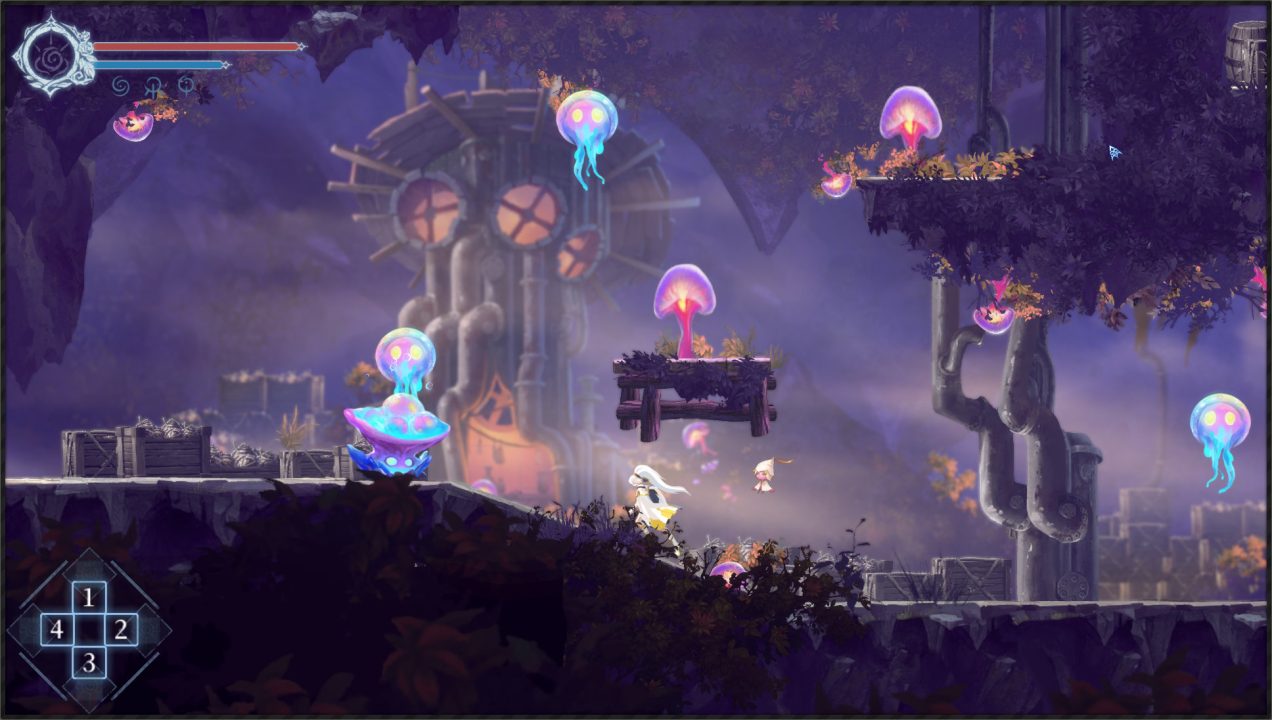As someone who greatly enjoys Metroidvanias as a whole despite the recent massive oversaturation of the genre, the details of every release keep me from getting burned out. While the broad strokes of every title might follow a common blueprint, it’s the individual flourishes that keep releases fresh and players hooked.
Afterimage is, unfortunately, a bit of a flat affair in this regard.
Set in the aftermath of “The Razing” which destroyed much of the world of Engardin, you take on the role of the (predictably) amnesiac heroine Renee as she strives to regain her memories and fix the broken state of the world. Although a story is being told and twists unwound, the presentation is undercooked. Attempts to incorporate an environmental, minimalistic narrative while simultaneously telling a moment-to-moment plot result in a story that is more confusing than it is intriguing. The voice acting only furthered my frustrations, as the half-baked delivery for most lines was immensely distracting from the story told on screen. This was especially true for Renee’s companion, Ifrit, who has something to say in almost every dialogue scene in the game (not unlike a certain other flying companion from Genshin Impact).
If you can tolerate the middling story, it’s clear that Engardin is an absolutely gorgeous world to explore from top to bottom. From towering ivory peaks to subterranean hellscapes, Afterimage’s scenery is as detailed as it is varied and makes for an inspiring playthrough based on the eye candy alone. However, the flow of the levels leaves something to be desired mainly due to the absurdly large size of every single one of them.
Indeed, Afterimage’s levels are so large that they feel detrimental to the overall experience. While getting lost in an area for an hour or so before stumbling upon an exit is part of the Metroidvania charm, Afterimage’s map size easily doubles or triples this time into tedium. This only becomes more pronounced once you begin backtracking to get all the previously ability-locked secrets. The scenic route back quickly became an absolute slog, and I was eventually forced to look up guides to see if the secret room I was tracking back to was worth the effort.
This design philosophy of “too much for its own good” extends into the skill tree as well. While the vast, sprawling menu seems impressive at first glance, minute, passive percentage increases make up about 90% of the skill tree, with a handful of weapon skill unlocks comprising the rest. Spending your hard-earned leveling currency to increase one stat by 0.5% per level feels outdated, to say the least. Having weapon skills locked behind this system also feels strange, as it discourages experimentation in the early game when currency is sparse.
Meaningful variety, however, exists with the gear you find scattered throughout the world. Six main weapon classes (of which you can equip two at a time) allow ample room for experimentation later on in Afterimage. The abundance of upgrade materials and the relatively low upgrade cap of three levels also help combat any hoarding sensibilities you might have from other RPGs. The only caveat to this is the low scaling of the weapons themselves. Any interesting effect found on an early-game weapon quickly becomes obsolete within a couple of zones. Coupled with no meaningful way to scale the damage, you often have no choice but to discard in favor of a new weapon that simply overpowers in sheer numbers alone.
Accessories are also often questionably balanced despite the more interesting design approach of having both positive and negative effects. In practice, however, the negative effects often felt overpowering compared to the boons offered, and the presence of generalist accessories with only boons ended up heavily undermining build variety.
Thankfully, the combat itself is usually satisfying enough that these issues don’t become too glaring until the midgame or so. Each hit comes with some very satisfying hit lag, which becomes especially prominent with weapons like the scythe that boast powerful multi-hit moves. Comboing between your two equipped weapons is a seamless affair thanks to the individual attack buttons for each weapon. A healthy roster of enemies to sink your teeth into makes sure the encounters never feel too rote while watching bosses melt after refining your combo game is an highly satisfying payoff for mastering your weapons of choice.
My only real complaint here lies with the ridiculous contact damage and its extremely steep scaling as you level up. Even with all the precautions of upgraded armor, contact damage reduction skill nodes, and heavily upgraded HP, a late-game mishap into a spike pit or an unfortunate bump into an enemy will easily wipe over a third of your health bar. Combined with some extremely tight (borderline pixel-perfect) precision required for some of the parkouring sections later on and so-so rewards, choosing to skip these sections in the late game could be best for non-completionists out there.
Afterimage is a valiant effort in the Metroidvania genre by the developers over at Aurogon Shanghai. Built upon a solid foundation for combat and world design, unfortunately, it is still noticeably rough around the edges. It sorely needed a couple more passes in the editing board for overall level flow and story presentation, but in the grand scheme of things, it’s still an enjoyable experience.





